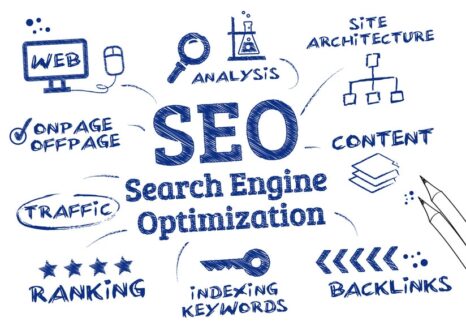
Search engine optimization (SEO) remains the cornerstone of digital visibility, but the strategies that worked a decade ago—or even last year—are no longer sufficient. As Google’s algorithms evolve, so must your approach. By 2025, ranking higher will demand a holistic strategy that balances on-page SEO, off-page SEO, technical SEO, and cutting-edge keyword research. In this 2,500+ word guide, we’ll dissect the latest search ranking factors and actionable tactics to future-proof your website.
Google processes over 8.5 billion searches daily, and 68% of online experiences begin with a search engine. Despite the rise of AI chatbots and voice search, SEO remains indispensable for driving organic traffic. However, the game has changed:
To stay ahead, marketers must adopt a semantic SEO approach, prioritizing context over rigid keyword matching. Let’s dive into the pillars of modern SEO.
On-page SEO focuses on elements you control directly on your website. In 2025, this means aligning with Google’s emphasis on user experience (UX) and topical relevance.
Start with keyword research to identify terms your audience uses. Tools like Ahrefs, SEMrush, and Google Keyword Planner help uncover:
Prioritize search intent by analyzing the top 10 results for your target keyword. Are they blog posts, product pages, or guides? Match your content format to user expectations.
Google’s 2023 Helpful Content Update rewards content that satisfies searchers. Optimize by:
Example: A page targeting “content optimization” should explain formatting, readability tools like Hemingway, and image alt-text best practices.
While not direct ranking factors, meta descriptions and title tags influence click-through rates (CTR). In 2025, leverage:
Technical SEO ensures your site meets Google’s infrastructure requirements. Neglecting this can nullify even the best content efforts.
Google’s page experience signals account for:
Use tools like PageSpeed Insights and GTmetrix to audit performance. Optimize by:
Schema markup helps Google understand your content. Implement:
Test markup with Google’s Structured Data Testing Tool.
Ensure all critical pages are indexed by:
Off-page SEO revolves around building your site’s reputation. In 2025, backlinks remain vital, but quality eclipses quantity.
Google’s SpamBrain AI now detects manipulative practices. Focus on:
Tools like BuzzSumo and HARO connect you with journalists seeking expert insights.
Use Ahrefs or Moz to audit your backlink profile. Disavow toxic links from:
Aim for links from topical authority sites. For example, an SEO tool provider should seek links from Backlinko or Search Engine Journal.
Semantic SEO involves creating content clusters that comprehensively cover a topic. Google’s BERT algorithm prioritizes natural language and context.
Interlink clusters to establish topical depth.
By 2025, 50% of searches will be voice-based. Optimize for:
SEO in 2025 demands agility. By blending technical SEO foundations, content optimization for users, and semantic SEO for context, you’ll dominate SERPs. Regularly audit your strategy using Google Analytics and Search Console, and stay updated via resources like Search Engine Journal and Google’s Webmaster Guidelines.
Q: How often should I update my content for SEO?
A: Audit high-priority pages quarterly. Refresh statistics, add new sections, and improve readability.
Q: Are meta descriptions still important in 2025?
A: Yes! They impact CTR, which indirectly affects rankings.
Q: What’s the fastest way to improve technical SEO?
A: Fix Core Web Vitals issues and ensure mobile responsiveness.
By implementing these SEO best practices, you’ll not only rank higher but also build a sustainable traffic engine for years to come.